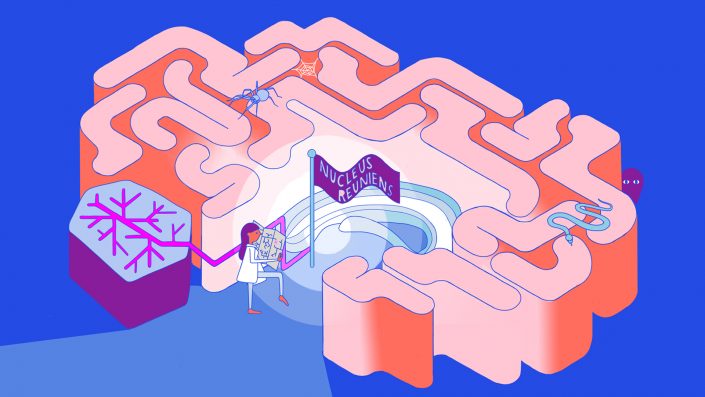Small region of brain assists in control of fear, A&M study finds

Illustration: Melissa Butcher, Research Communications
A study conducted at Texas A&M University has identified a new area in the brain involved in inhibiting fear, a discovery that holds potential for clinical interventions in patients with psychiatric diseases such as post-traumatic stress disorder (PTSD).
Stephen Maren, University Distinguished Professor and holder of the Claude H. Everett, Jr. ’47 Chair of Liberal Arts, Department of Psychological and Brain Sciences, College of Liberal Arts, and his team have discovered that a small brain region in the thalamus called the nucleus reuniens plays a role in inhibiting fear in rats.
Prior to his discovery, the region was thought to act primarily as a pathway by which sensory information travels from the periphery of the brain to the cortex, the part responsible for performing complex thought.
“It’s interesting because we know that the prefrontal cortex plays an emotion regulation role, and so there has been a lot of interest in how it accomplishes that,” Maren said. “So this basic research, identifying this particular projection from the prefrontal cortex to the nucleus reuniens in the thalamus, points us to parts of the brain that are important for the inhibitory function of fear, which could be an avenue to new drugs, therapies and interventions for psychiatric disorders.”
The National Institutes of Mental Health, the McKnight Endowment Fund for Neuroscience and the Brain and Behavior Research Foundation funded this study. The article was published in Nature Communications on Oct. 30.

